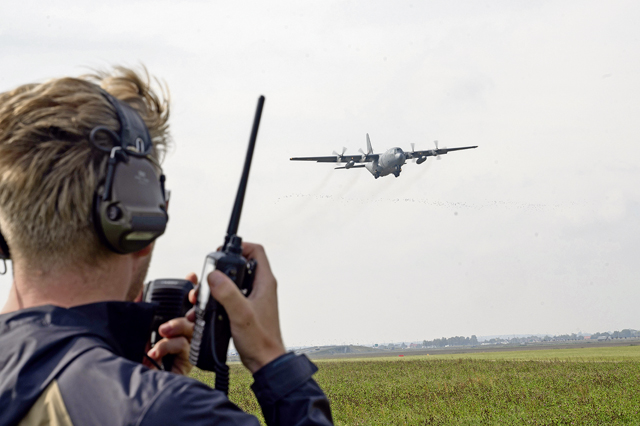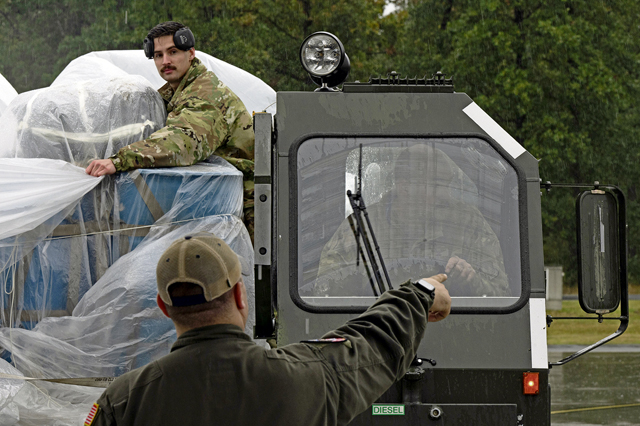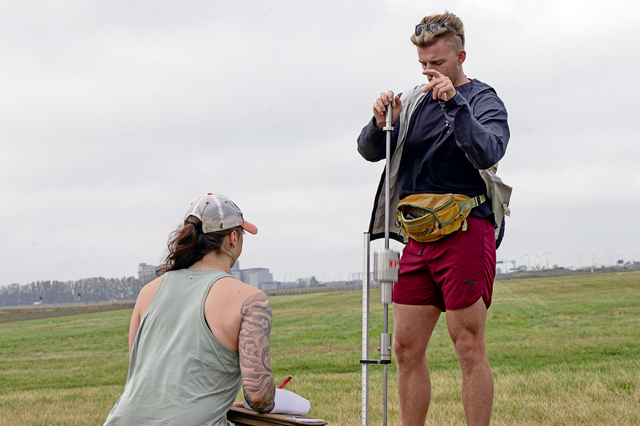
The 86th Airlift Wing is home to the only Cross Functional Airlift Support Personnel program in the U.S. European Command, giving this small — but efficient — team a big responsibility.
CASPER is a Mission Ready Airman program training Airmen from different Air Force Specialty Codes on skills that are needed to support a variety of missions.
To take Airmen from all around the force and provide them with the skill-set needed to complete the CASPER mission requires rigorous training. This training is completed through a combination of self-paced and in-person classes conducted around the Airmen’s primary duty schedule.
“CASPER is used to fill in any voids for the wing, on any missions necessary,” said U.S. Air Force Senior Master Sgt. Richard Colon, 86th Airlift Wing Agile Combat Employment superintendent. “We take any Airman and train them to work any job.”

Members of the team can expect to spend at least 30 days a year on training or missions. During this time they execute the skills they’ve been trained on and support flying training deployments around Europe in countries like Greece, Poland and Bulgaria.
“We’ve had situations before when something was broken or needed refueling and we had a CASPER member switch roles to fix the problem,” said Colon. “Having a team that’s able to be so flexible in their support helps the missions greatly.”
CASPER is available to those who maintain a 90 or above on their physical fitness test and are between the ranks of E-5 and E-8 and O-1 and O-3.
CASPER is a small team that can do everything that goes into supporting a mission, whether that is operating forklifts, performing loadmaster duties or setting up landing and drop zones, according to U.S. Air Force Staff Sgt. Nicholas Coburn, 86th AW CASPER lead and Mission Ready Airmen program lead. CASPER supports the Airlift Wing’s diverse mission set, which could range from bringing cargo to Africa one day and the next day medically evacuating someone from Poland.

“In my normal job I always get to load the cargo, but never see what happens beyond that or how we use it on missions,” said Coburn. “Being able to get out, see what everyone else does, and how they contribute to the mission gives me a better understanding of what our wing does beyond my normal job.”
The CASPER team often works closely with the 37th Airlift Squadron, 435th Air Ground Operations Wing, 86th Operations Support Squadron and 1st Combat Communications Squadron. These units work, train and operate together to keep Airmen continuously ready and prepared for any real-world threats that may occur.
“Joining the CASPER team provides a different look at the Air Force for those who do not see the immediate impact of their primary duty,” said Coburn. “For example, it allows people in medical or finance to see the people and the mission they have an impact on – no matter how big or how small they believe their job affects others.”
For information and details about joining the CASPER team, please contact the team lead at DSN 314-479-2236.


